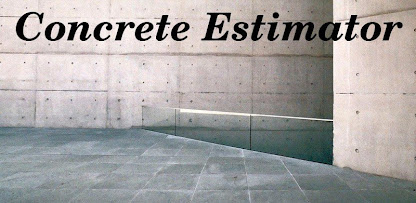Accurate material calculations are essential for the success of any construction project. A concrete estimator is a highly effective instrument for ensuring correct estimations. This article will walk you through the steps of using a concrete estimator to precisely determine your material requirements, allowing you to save time, eliminate waste, and remain within budget.
Understanding the Basics of a Concrete Estimator:
A concrete estimator is a tool for calculating the amount of concrete required for a construction job. It takes into account a variety of criteria, including the size of the area to be covered, the thickness of the concrete layer, and the type of concrete mix. By entering these criteria, the calculator generates an accurate estimate of the required materials.
Steps to Calculate Material Needs with a Concrete Estimator:
Gather Project Details:
Begin by collecting all relevant project details. Determine the length, width, and depth of the area where the concrete will be poured. Ensure that these dimensions are correct, as any variations can result in a deficit or an excess of concrete.
Input Dimensions into the Estimator:
Once you've got your measurements, enter them into the concrete estimator. Most estimators include fields for length, width, and depth. Choose the proper units of measurement (feet, meters, inches, etc.) based on your project specifications.
Select the Concrete Mix:
Concrete mixes must be adapted to specific projects. Concrete estimators often provide options for various mixes, such as normal concrete, high-strength concrete, and lightweight concrete. Choose the blend that best meets your project's requirements.
Calculate the Total Volume:
After entering the dimensions and selecting the concrete mix, the calculator will determine the total amount of concrete required. This volume is often measured in cubic yards or cubic meters. Make sure the calculations reflect the specifications for your project.
Adjust for Waste and Spillage:
It's essential to plan for probable waste and spills. Concrete estimators frequently incorporate a waste percentage—usually between 5 and 10%. Adjust the rate based on your experience and the project's complexity. Adding this buffer guarantees that you have enough concrete to finish the work without running out.
Benefits of Using a Concrete Estimator:
Accuracy:
A concrete estimator produces exact estimations, lowering the possibility of ordering too much or too little material. Accurate estimates can assist avoid project delays and increased expenses caused by material shortages or excesses.
Cost Savings:
You can save money by estimating the required materials precisely. It also reduces trash, promoting more sustainable construction practices.
Time Efficiency:
Using a concrete estimate simplifies the planning process. With quick and trustworthy calculations, you may concentrate on other important areas of your project, ensuring its timely completion.
Conclusion:
A concrete estimate is a useful resource for any construction project, providing accuracy, cost savings, and time efficiency. You may verify that your material requirements are accurate by taking precise measurements, selecting the appropriate concrete mix, and accounting for waste. Incorporating a concrete estimate into your project planning will help you achieve better results, avoid waste, and remain on budget.
Speedy Concrete offers top-quality ready mix concrete in Vancouver. We provide custom mixes, timely delivery, and eco-friendly solutions for all project types. Trust us for reliable and efficient service.





Comments